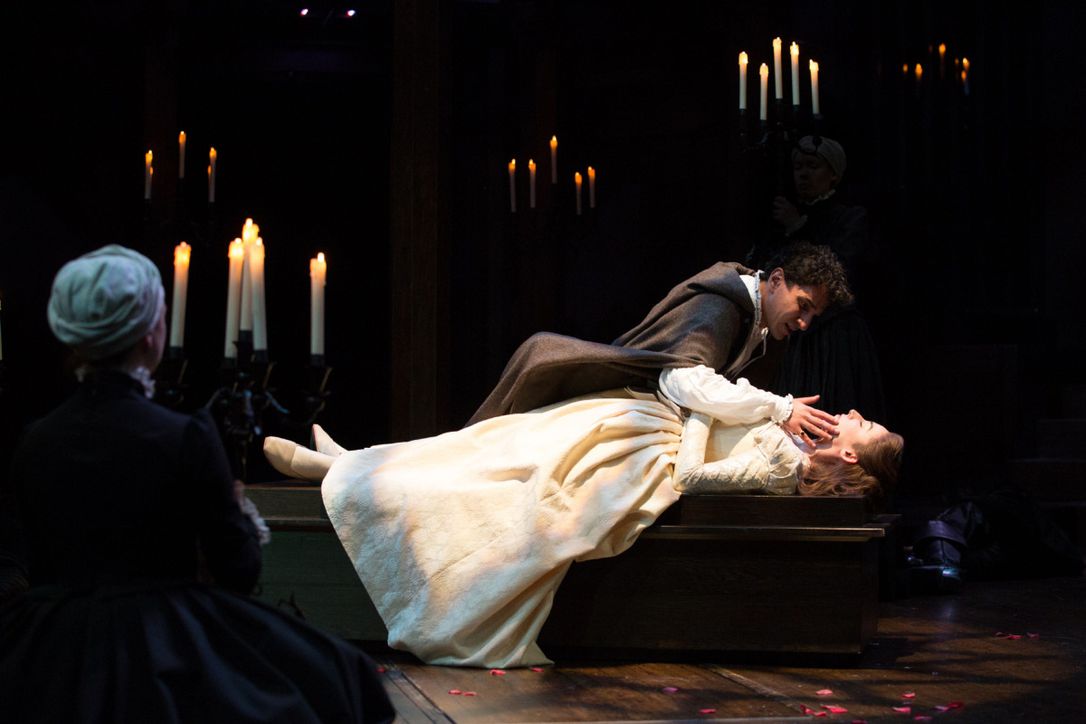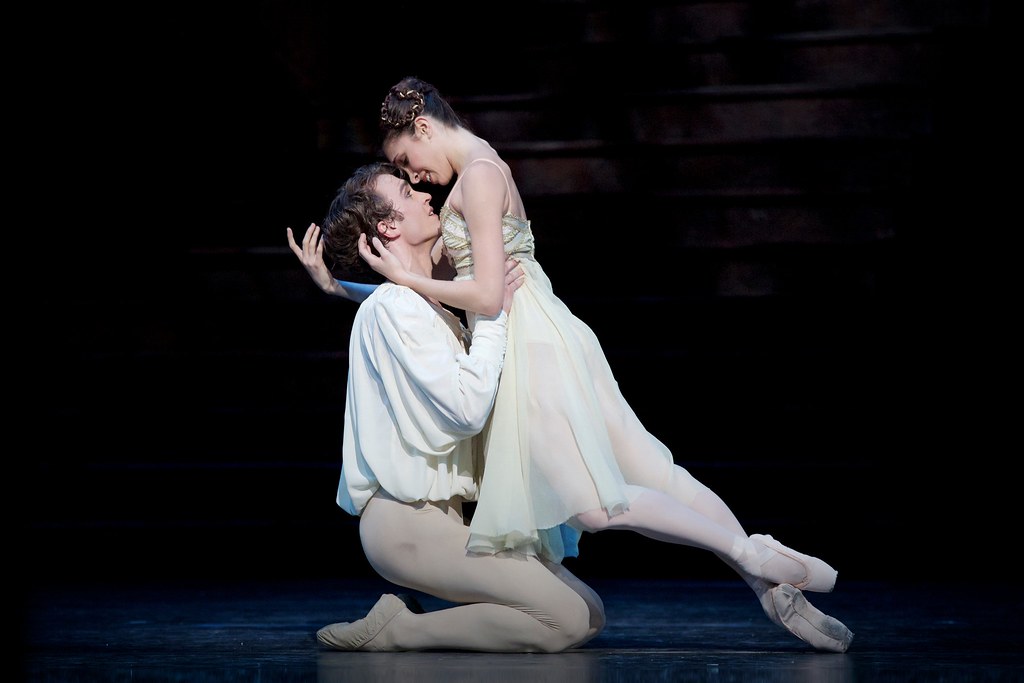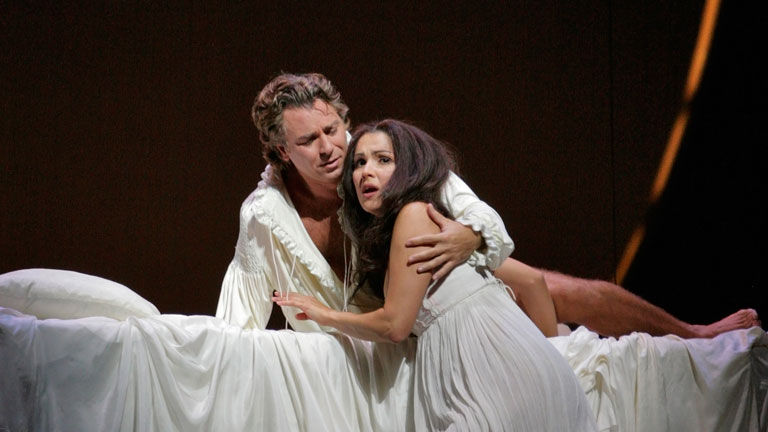VIEWPOINTS – ROMEO & JULIET three ways: As theater (Shakespeare), dance (MacMillan), and opera (Gounod)
- By drediman
- July 28, 2020
- No Comments
Adaptations of iconic Shakespeare plays from into other genres of performing arts isn’t a new phenomenon. It is unusual, however, for these adaptations to attain the same classic status in their individual spheres (e.g., dance, opera) as the underlying Shakespeare plays. With perhaps the exception of A Midsummer Night’s Dream – which has been interpreted to wide acclaim for dance and opera by George Balanchine and Benjamin Britten, respectively – the only other Shakespeare play that has enjoyed the same crossover appeal has been Romeo and Juliet. Last week, I was able to stream and compare the famous Shakespeare tragedy with an opera and a ballet that it inspired. In short, although both these subsequent iterations honor the spirit of the play, they proudly exist as their own entities within their respective worlds of dance and opera.

Antoine Yared and Sara Farb in the Stratford Festival’s production of Shakespeare’s “Romeo and Juliet”.
THEATER
First up was Shakespeare’s play itself, as presented by the excellent, Ontario-based Stratford Festival in its 2017 production. Don’t let appearances fool you. Despite a rigorously traditional look, Scott Wentworth’s staging of Romeo and Juliet (HIGHLY RECOMMENDED) brims with propulsive vitality. But more importantly, it uncannily articulates the text in a way that resonates with the sensibilities of contemporary audiences. It was a breath of fresh air to watch a production of this play that eschews potential gimmickry in favor of thoughtful, in-the-moment characterizations and storytelling. Starting with Antoine Yared and Sara Farb’s titular lovers, I was pleasantly surprised at how effectively the duo filtered the language through the lens of the psyche of today’s youths. It also doesn’t hurt that both Mr. Yared and Ms. Farb are smart, hugely likable, and age-appropriate actors who have great chemistry with each other. The same can be said of a number of actors in secondary roles, like Evan Buliung (Mercutio) and Wayne Best (Friar Laurence), both of whom bring fascinating textures to the oft-performed play. Throughout, the intelligent acting and directorial choices made me see and listen to the play afresh, resulting in a gripping entertainment — the kind of theater that sometimes eludes productions of Shakespeare. And like most offerings at this prestigious festival, the acting at large was remarkably lucid.

Matthew Ball and Yasmine Naghdi in the Royal Ballet’s production of Sir Kenneth MacMillan’s “Romeo and Juliet”.
DANCE
Perhaps of all the dance adaptations of Shakespeare’s tragedy, the most beloved of the lot is Sir Kenneth MacMillan’s ballet, which was originally staged in 1965 by the Royal Ballet (it’s essentially the same staging that American Ballet Theatre currently performs). With its evolved sense of detail and drama, the production upon its premiere was heralded as an instant classic and a big step forward in dance theater (especially from repertoire standards like The Sleeping Beauty, Swan Lake, and Don Quixote). Although we lose the beauty of Shakespeare’s poetry, Mr. MacMillan’s inspired, organic choreography to Prokofiev’s classic score conjures the raw passion and urgency that’s associated with Romeo and Juliet, requiring its principals to dance as much as act. It also efficiently follows the string of events of the Bard’s plot astonishingly closely. Over the years, I’ve seen plenty of dancers take on the title roles. Happily, the 2019 Royal Ballet revival (HIGHLY RECOMMENDED) I streamed last week was a top notch performance. As Romeo, Matthew Ball (whom I was very impressed by in the most recent tour of Matthew Bourne’s Swan Lake at New York City Center; you can read my review here) is a regal stage presence and a dancer of effortless finesse. It’s no wonder that Yasmine Naghdi’s sensitive, achingly-acted Juliet falls for him. Both are also just the right age and temperament for the roles, which is not always the case.

Roberto Alagna and Anna Netrebko in the Metropolitan Opera’s production of Gounod’s “Roméo et Juliette”.
OPERA
Then we have Roméo et Juliette, Charles Gounod’s 1867 operatic adaptation, which I recently accessed via the Metropolitan Opera’s Nightly Opera Stream series. The 2007 performance (RECOMMENDED) starred tenor Roberto Alagna and superstar soprano Anna Netrebko as the tragic couple, and both were in glorious form. With his ringing tenor, Mr. Alagna is as ardent a tenor as they come and is a perfect fit for Roméo. As for Ms. Netrebko, the performance captured her in an intriguing point in her career – although her acting still registered as the sparkling ingénue she specialized in early in her career, her voice was beginning to reveal heftier, more dramatic coloring. In other words, it was the perfect time for her to take on a tragic young heroine like Juliette. I have mixed feelings about Guiy Joosten’s awkward, pseudo-cartoonish production, which tended to veer on the bland side. I much prefer the staging that replaced it, Barlett Sher’s more coherent naturalistic production which premiered in 2017. Compared to MacMillan’s ballet, the Gounod opera necessarily condenses Shakespeare’s tale (e.g., the opera begins at the Capulet’s ball) to accommodate the elongated phrasing required in an operatic score (particularly the arias). Additionally, the composer and his librettists Jules Barbier and Michel Carré take some liberties with the play (e.g., Juliet dramatically makes it to her wedding ceremony before the self-inflicted poison takes hold on her at the alter; the final duet with her lover in the tomb). The performance was conducted by Placido Domingo, who brought his Italianate sensibility to the French score.

 Copyright © 2025
Copyright © 2025
Leave a Reply